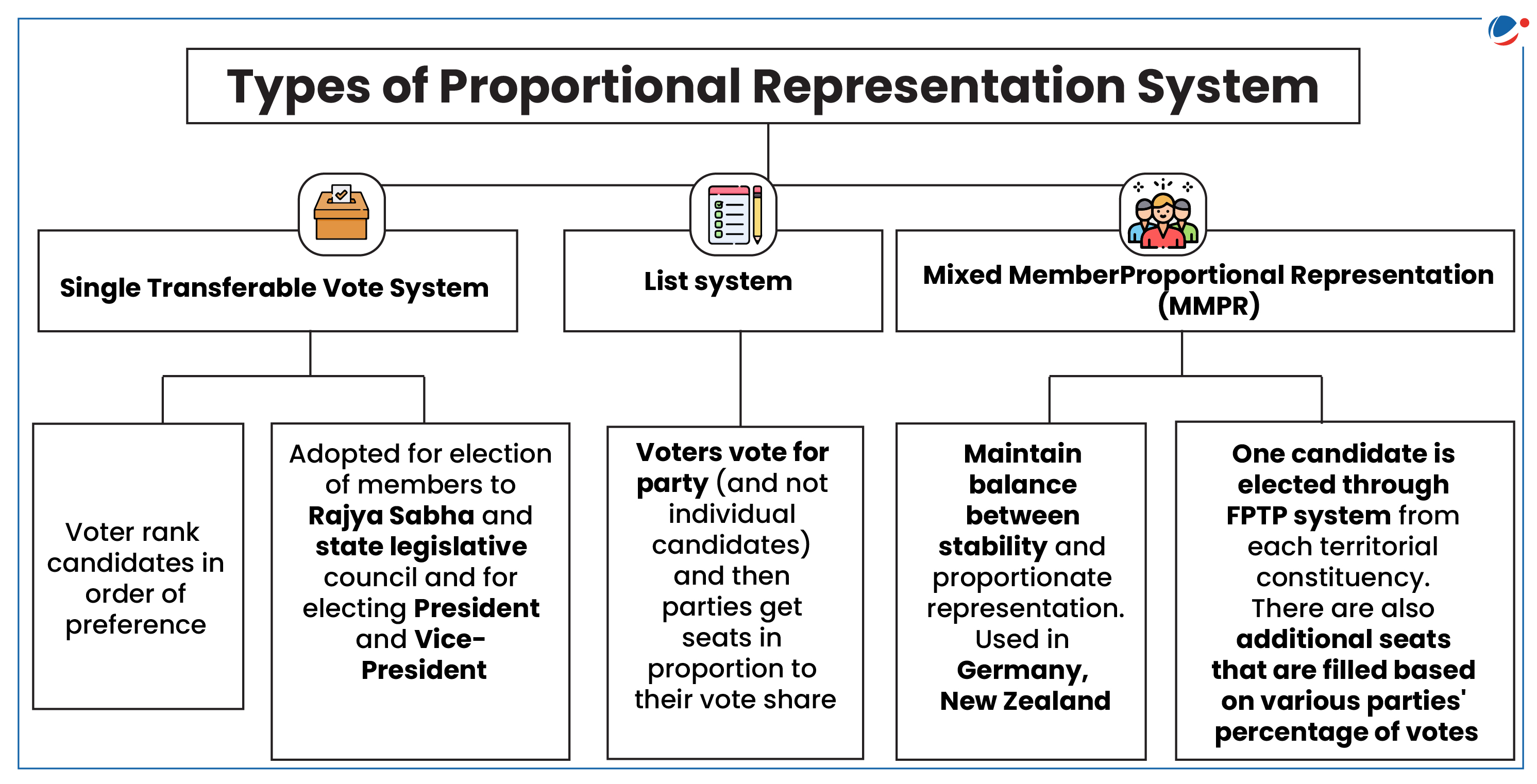Why in the news?
Recently, experts in India have called to consider Proportional Representation (PR) for Lok Sabha and State Assembly elections instead First-Past-The-Post (FPTP) electoral system.
Difference between First-Past-The-Post (FPTP) and Proportional Representation
| First-Past-The-Post (Simple majority system) | Proportional Representation |
Geographical unit |
|
|
Representation |
|
|
Voting Process |
|
|
Seat Distribution |
|
|
Examples |
|
|
Benefits |
|
|
Concerns |
|
|

Reasons for not adopting PR system by Constitution
- Difficulty for voters to understand the PR system due to its complexity.
- Unsuitability to parliamentary government due to tendency of system to multiply political parties leading to instability in government.
- Highly Expensive and does not give any scope for organising by-elections.
- Eliminates intimate contacts between voters and representatives.
- Increases the significance of party system and decreases that of voter.
Way ahead
- Law commission Recommendation (170th report): Introduction of MMPR system on an experimental basis. It had suggested that 25% of seats may be filled through a PR system by increasing strength of Lok Sabha.
- Incorporating MMPR system for incremental seats or allocating at least 25% from each State/UT could alleviate apprehensions of smaller states (like Meghalaya) about FPTP system dominance by larger States.
- Increasing number of seats based on 2026 Delimitation Exercise: Over past five decades, uneven population growth across regions complicates allocating Lok Sabha seats solely by population, potentially undermining federal principles and causing state disenchantment.



